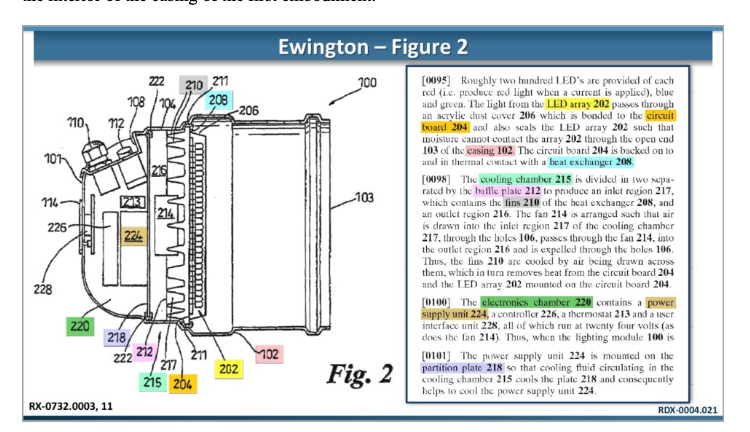Read Cree’s comment at the end of this article
On July 15, 2020, Ideal Industries Lighting LLC d/b/a Cree Lighting (“Cree”) filed a complaint alleging violations of section 337 of the Tariff Act of 1930 against RAB Lighting.
EdisonReport first reported on the ITC in July of 2020, In addition, your humble editor sat in on a few of the zoom meetings hosted by Judge Clark Cheney earlier this year. Last month Judge Cheney made his initial determination. Of the 5 patents where Cree claimed an ITC complaint, the three most important were ruled invalid three or four times over. This is a big win for RAB and an even bigger win for the industry. A fourth was ruled valid, but RAB no longer uses that design. A fifth was ruled valid, but RAB has applied to have it overturned and we think their case is strong.
In an ITC case, the initial judge makes a first determination which is later reviewed by a panel of judges, allowing the companies to make additional comments, before a final determination is made.
The ‘819 and the ‘531 patents (Lighting Device and Method of Lighting), pretty much cover the entire lighting industry. Think of these as Lumens per Watt patents and if Cree was successful, luminaires with efficiencies of 85 lumens per watt (‘531) or 60 lumens per watt (‘819) would be in violation. Had the patents been upheld, the entire industry could have faced potential claims for infringement and demands for royalties for any luminaires with efficiencies above these thresholds. The judge’s initial determination was in RAB’s favor. This was not a partial invalidation; it was a complete invalidation on multiple grounds and will be very difficult for Cree to overturn.
Next is the ‘449 patent. Think of this as the downlight patent and it was very broad as the patent claims a lighting device containing ‘a trim element,” so Cree’s claim basically covers any LED downlight. The judge’s initial determination was in RAB’s favor. Cree does not manufacture downlights in the U.S. and because they lack the domestic manufacturing for this product, Cree does not have standing.
The above three (particularly the ‘819 and the ‘531 patents) were the most important claims and they were invalidated.
The ‘570 (Lens with controlled backlight management) has to do with free form optics. Think of those clear organic lenses that look like an unusually shaped water droplet. RAB lost this battle, but fortunately for RAB, they no longer use this product, so it has no effect to RAB.

Of the five patents, the only issue from RAB’s perspective is the ‘270 (LED Lighting fixture.) Think of this as the Thermal Management Patent to separate the chamber of the driver electronics from that of the LED modules. RAB believes the judge erred as there is prior art from the inventor Ewington that used the same basic invention for thermal management. Cree’s patent is for a ‘power-circuitry driver’, which today we simply call a driver. Ewington’s patent, which would be considered prior art, was for a ‘power supply unit.’ Recall that in those early development days of LED, the names of components weren’t well defined. According to RAB, this defense was RAB’s strongest argument.
Last month, Cree published a statement regarding the findings which stated, “While the USITC process is not yet complete, Cree Lighting is very pleased that this initial determination affirms our rights to protect our intellectual property investments for these two patents.”
If RAB can convince the ITC panel that a power-circuity driver is the same thing as a power supply unit, they should be able to get this finding reversed and be home free.
For the sake of the industry, we hope RAB prevails.
Below is a statement from Cree Lighting:
==============================
Cree Lighting disagrees with the edisonreport.com assessment of the pending ITC Investigation. Administrative Law Judge Cheney in his Initial Determination found a violation of Section 337 of the Tariff Act of 1930, as amended, by RAB Lighting for its infringement of two Cree Lighting patents. With respect to the other three patents at issue, Cree Lighting has respectfully identified various issues for which it seeks Commission review, and eagerly awaits resolution of those issues in the coming months.
Cree Lighting manufactures the majority of our lighting products in our state-of-the-art Racine Wisconsin facility. We are an American, family-owned manufacturing company who proudly provides income opportunities for American workers and their families.
==============================



